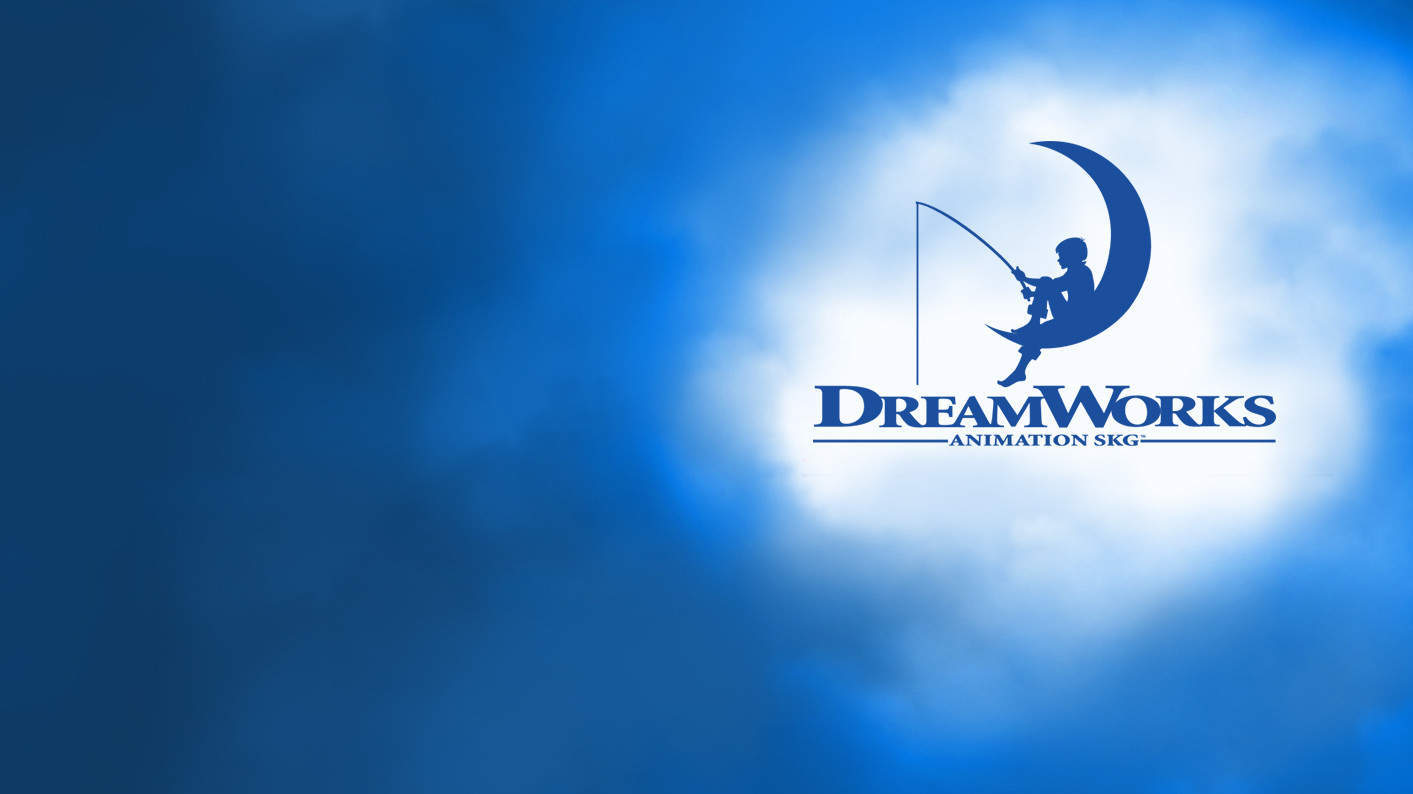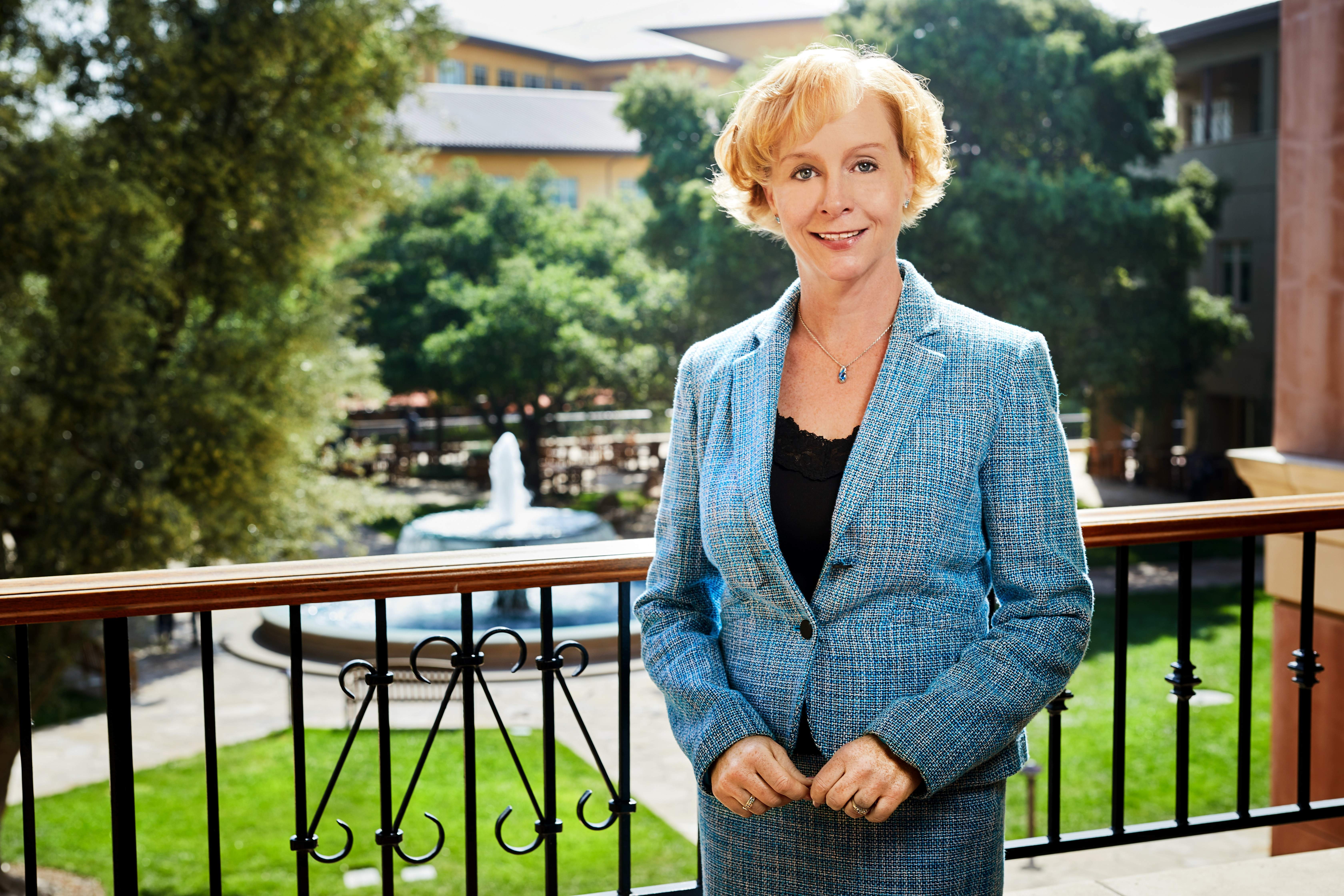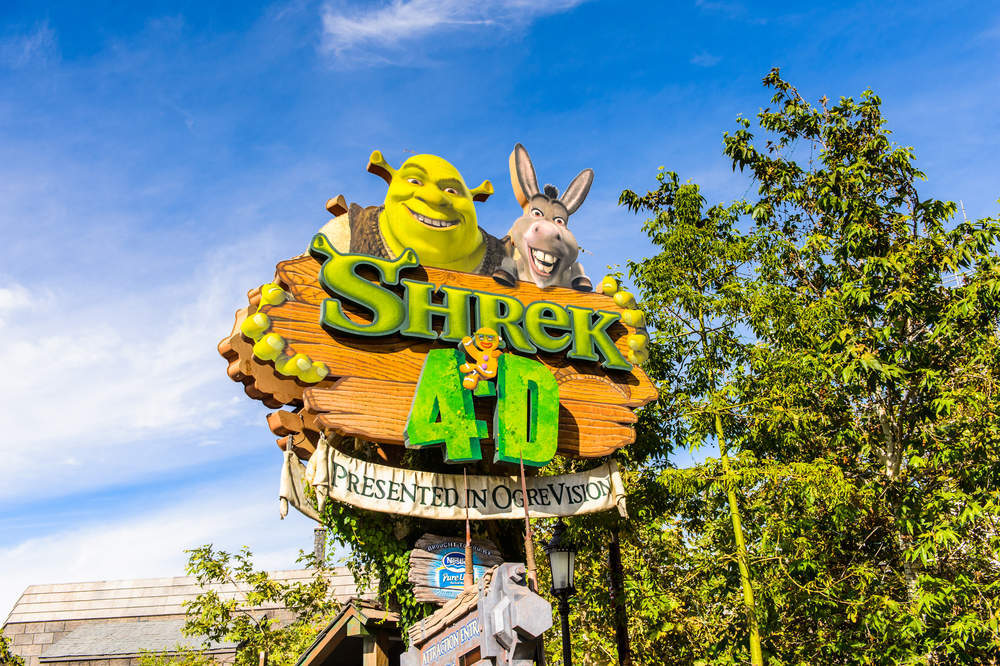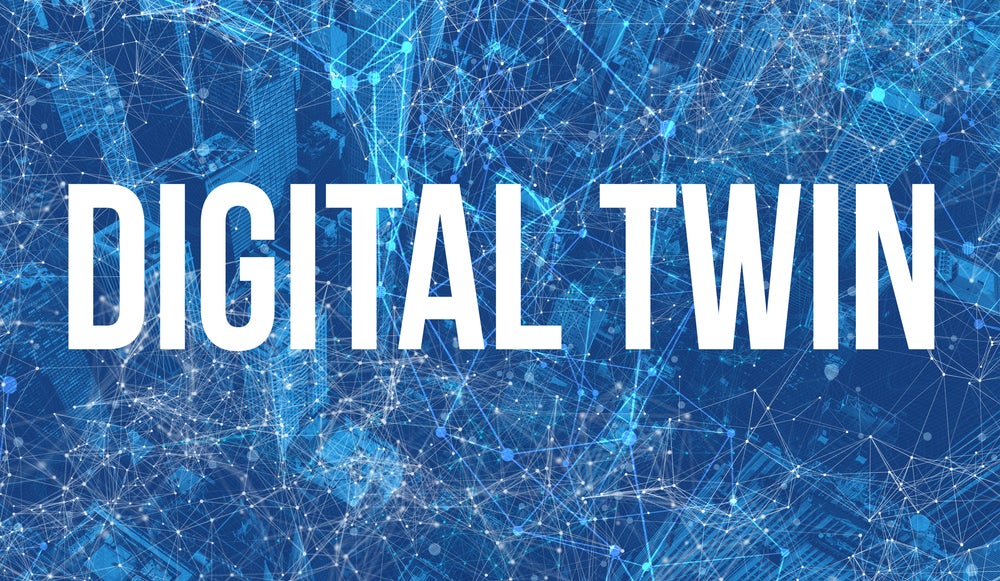
At the beginning of your career it’s hard to predict where you’ll end up.
With the rapid expansion of technology in the film industry new opportunities and roles are springing up all the time in areas that no one could have predicted. People can come into a studio to do one job and end up facing in quite another direction.
For Kate Swanborg, senior vice president of technologies and strategic alliances at DreamWorks Animation, that’s exactly what happened.
Beginning her career as a production manager at Warner Bros Animation, Kate quickly proved herself on films including The Incredible Mr Limpet, Space Jam, and Shrek.

At the same time, DreamWorks was facing an identity crisis.
With the success of 1998’s Antz the studio was beginning to see the benefit in working on computer generated films. Shrek continued this trend and won huge profits of around $424.4m at the box office alone.
The trouble, however, which no one could have predicted, was a communication breakdown between DreamWorks production and technology departments.
Having observed her work at Warner Bros. Animation, a DreamWorks executive approached Kate to ask whether she’d consider joining their technology division to help fix that communication issue.
“I was a little taken aback because I don’t have a background in engineering. I expressed that. But what they allowed me to understand was at the time, this was almost 20 years ago, 18 years ago, they told me there was a communication rift between the technology organisation and the production organisation – they don’t hear each other well and we think that if we bring somebody from production into the engineering organisation we can really bridge that gap.
“I was brought in as the technology production manager to help be the bridge between all of the engineering projects that were going on, that were solely for production, and yet the production groups didn’t understand a lot about them, sometimes when they were ready to be deployed and a lot of times what production really wanted and needed wasn’t getting well communicated back to engineering. I spent almost ten years doing that. It was an incredibly fulfilling role for me and over that period of time, that gap did get bridged. In fact I think one of the biggest success stories about that is that we don’t have that role anymore.
“Now the relationship between technology and production is so extraordinarily good and robust, now the artists they don’t hesitate to talk to the engineers. They go directly to them and say ‘here’s what I’m thinking, what do you think? Do you think that’s possible? If so, how could we do it?’ The level of collaboration at our studio between art and technology is super high and it’s really a super fun place to work because of that.”
Since then Kate has risen through the ranks, becoming a technology executive, and eventually the senior vice president of technology communications and strategic Alliances. It’s this latter part of her job title that led to our meeting.
It was a drizzling October day when I met Kate at Hewlett Packard Enterprises’ London office.
The alliance between HPE and DreamWorks ensures that the latter always has access to the top-of-the-line computers and software they need to ensure their films are always as cutting edge as they need to be.
Kate was in town to negotiate and discuss that relationship going forward. In a sleek boardroom, I was invited to chat with Kate about upcoming DreamWorks Animation projects and the power of their technology division.
Every major production company from 20th Century Fox, to Disney, to Paramount have a technology organisation focusing on CGI films, something it would appear they are fiercely protective of.
Do DreamWorks ever share their technology or collaborate with other players in their industry, I ask Kate.
We have engineered and architected one of the best rendering softwares anywhere on the planet at the moment. There’s lot of interest in that. And also, without question, our animation tool set is one of the most interactive real time feedback engines anywhere. Many companies have expressed interest in that. What we’re interested in doing at DreamWorks is making amazing movies.
That’s our sole business focus. We want to make the most expressive, visually imaginative films, the greatest stories that anybody has ever told. That’s our job. If there’s any opportunity for us to take our technology and move it into the market place in a way that helps us support our films and keep a focus on a films, that’s the way we would want to do it.
And few could deny that DreamWorks’ focus on making its films is paying off. In the 19 years since DreamWorks Animation started its operations, they have crafted no less than 35 films with another six already confirmed to be hitting screens before 2021. A further 10 films are confirmed to be in development.
And those films are seriously well-received.
Their average score on amongst critics on Rotten Tomatoes is 72 percent, well into the so-called fresh category. In addition, only one of those films (The Road To El Dorado) has failed to turn a profit at the box office.
Of the 35 films that DreamWorks Animation has released, 33 have made over $120m. 2004’s Shrek 2 made nearly $1bn at the box office.

Kate’s passion for DreamWorks Animation’s work is obvious in our conversation.
She speaks at length in answer to even the most basic question, never failing to heap praise on the staff and crew who work the films.
When I confess my childhood love for the Shrek franchise she giggles and says with a grin ‘me too!’ When I ask what separates DreamWorks Animation from its competitors she looks ponderous, trying to choose the right words.
I think that one of the things that we’ve always valued in our approach to film-making and content creation is crafting stories and crafting visual imagery that people feel like they’ve never seen before.
We definitely shy away from any sort of formulaic approach to anything. What we truly love and invest in, and what we believe our audiences love about us, is that our films actually feel and look ahead of the curve and cutting edge. We love telling stories that are designed for the whole family. Of course the children, of course the kids! But also the parents and also the grandparents and the aunts and uncles.
And frankly, we love just telling stories that adults just like to go to, and maybe they’ll borrow a kid so they don’t feel bad! But we like telling rich stories in that way. And not stories that are just focused on one demographic. And the other piece is telling stories that are really globally loved. It’s been a real joy for me over the years to see how popular our films have been in countries around the world.
Because I feel like we’re really speaking to what’s human in all of us, regardless of where we live or what our cultures are like. I’m sure that’s going to be a part of things going forward.
So how do DreamWorks make a movie? From conception to delivery, Kate talked me through the process:
“We have an organisation at DreamWorks called the development department. It’s their responsibility to be looking in many, many different places, whether that’s a script in the door or a book that we’ve optioned or even just original ideas. Their job is to consider those and discuss them and pitch them internally to small creative groups until they choose, on a routine basis, four or five or six possibilities that they think might actually become a really great feature film. Then they’ll assign one or two artists to it, maybe three or four, but a very small number.
“Then we’ll start visualising it. Because, of course, with feature animation the visual storytelling is the most critical aspect. What happens in the story is important, but how you show that is really what captures people’s hearts and minds when the audience goes to see it. So we’ll put artists on it right away to sort of develop that look. In that time period, a couple that will come out of that that are clearly the front runners. And eventually they’ll get green lit and we’ll go make those.
“Once a film is starting to become a really great candidate for getting green lit, the technology organisation, especially the leadership is brought in, really early on. Now that didn’t used to be the case a long time ago. This is one of the things that has gotten so much better. The technology organisation is brought in really early on, and they’ll talk with the creative leadership and they’ll talk through ‘well here’s what we’re thinking, we’re thinking that we wanna try to do these things and these are some of the things we haven’t done before, and here’s the schedule, etc.’
“And the people running the business, you know, the producers will sitting there too and with their business minds on their be saying ‘here’s our schedule, here’s our budget (because the budgets are all specific to each movie)’ and collaboratively between the business and the technology group and the creatives and we’ll come up with a plan on how we’re going to move forward.
“Now that plan changes and it ebbs and flows but that’s really the impetus of it all. And these movies take about four or five years to make. The first few years are about designing the environments and the characters and doing all the work to craft all the props and assets. And the last two years are about doing all the animation and the surfacing and the texturing and doing all the lighting, orchestration and eventually you put a movie in the theatre.”
The other key to DreamWorks’ success is, of course, the huge celebrity names they get involved with their films.
Mike Myers, Cameron Diaz, Ben Stiller, Jada Pinkett Smith, Jack Black, Angelina Jolie, and Alec Baldwin are just a few of the recognisable names who’ve been involved in DreamWorks films over the years.

In many cases, the stars embody their characters for multiple films. So what keeps them coming back?
I was also curious to learn whether Kate felt that new technologies such as motion capture were breaking down the barriers between actors and technology engineers. According to Kate, the actors often do a lot more than just record their lines and leave.
“First of all, the actors and actresses we hire are so gifted. And they come into the process super early, when we’re doing storyboarding and doing development. So what they think about the characters and what they’re doing is very, very informative to the entire film. So not just the character but the whole storytelling and the nature of the film. Alec Baldwin and his approach to being the Boss Baby was just a core component to how that film turned out and of course, by the way, he’s also in the Boss Baby 2.
“So that’s one thing. And then you asked about the technology and whether the artists and actors ever have a hand in the technology. What’s interesting about that is that there have been times where the choices they make have us doing things that we have to think about.
“We had a film a couple of years ago that was called Bee Movie that was an inspiration of Jerry Seinfeld’s and both how he wanted the bee to be portrayed and really even the script and everything else put us in a position where we had to design software in order to be able to animate that many bees and the level of detail, all the tiny hairs on a bee body; you didn’t want too many because you didn’t need to see them all, I digress. All of these things we had to design what we call level of detail software in order to do that for their wings and their little bodies. So while he didn’t collaborate directly with us, he set targets that caused us to innovate in ways that we wouldn’t have done before.
“The third answer to your question, being very specific about things like facial capture: we do absolutely use motion capture and facial capture in some of the areas of our business. Now we don’t use it for animation because we have our animators and they are truly gifted at performance. As it turns out there’s a lot of our characters where, for example, having a human act as a dragon, is just tricky. You can’t get the performance you’re looking for.
“But what we’ve found is that in using motion capture technology, whether it’s facial capture or other types of things we’re actually able to take some of our characters that people know and love like Shrek and some of the characters from Madagscar and use those camera capture technologies to do marketing materials or other off-shoot content for us because of how quickly and easily we’re able to generate that content based on characters people already know and love.
“That’s a long answer but it’s all true. Everything from the actors gifting the script to driving technological needs and innovation to us using that kind of technology and again, for us, what we really want is to have the most cutting edge set of tools so that as the filmmakers come in, anything that they want to try and experiment and iterate with, we can at least try or experiment or iterate with that!
“And again, the actors are so gifted. We do film them all while they’re being recorded and all of that filming of them – you know, because they emote, right? They gesture and they smile and they frown and they have all these expressions – we capture all of that from a video standpoint and we make that available as reference to all the artists so they can actually see how Alec Baldwin looked. Then the animator can watch that see how much he wants to imbue the baby with that. After all, it is a baby, it’s not a full grown man so there’s certain expressions that are just gonna not look right, but there’s characteristics that can come over. So the actors performances are highly informative from that standpoint.”
Of course, the right actors and the right story will only get you so far.
Ultimately, what makes DreamWorks Animation a success is the technology at its core. Aside from the likes of Pixar and Disney Animation Studios (which is where DreamWorks’ original founder Jeffrey Katzenberg started his career in earnest) there are few animation studios with quite such a storied history as DreamWorks.
And it was Katzenberg that pushed DreamWorks into the purely digital animation world.
That was all thanks to Sinbad: Legend of the Seven Seas. Despite the fact that it turned a profit at the box office, the film was not a financial success. Sinbad was actually responsible for a $125m loss for DreamWorks which very nearly bankrupted the company.
As a result, Katzenberg was keen to move on from traditionally animated movies and into CGI. It was a risky move that soon paid off as DreamWorks’ very next film, Shrek 2, became their highest grossing ever.
So what kinds of technology does DreamWorks use to make their films? How do they make sure that tech is always as cutting edge as it physically can be? And have they ever been faced with a new innovation that they simply didn’t see coming?
“In the early days, when we were getting up on our feet 20 years ago, we did have those moments (where the animators had to contend with unexpected innovations). It’s not that it’s unexpected, it’s just that the timing was unexpected. Essentially in those days we’d have to go back to the producers and the story tellers and we’d say, ‘yeah, of course we can do that, but it’s gonna take three months” or “of course we can do that but we’ll have to wait for this film to wrap up and then we’ll give you their resources.’
“There was a lot more design and bartering and trading and planning that had to go into it. You eventually worked it out but there was a lot more manual effort in doing that.
“I think that our expectation around technology is that if you’re engineering on the cutting edge, which is what we’re doing, you really should be able to direct how that technology is being used pretty effortlessly and not have to feel like we have to have some enormous plan to iterate on something or try something out. We really want to give the business an incredible amount of flexibility. And we really want to give the story-tellers the sense that the technology is at their fingertips, that it’s not troublesome or difficult. We don’t want that to impact the ideas that they’re having. We want to express them and go do them and go and be the most amazing storytellers they can be.”
Kate also explained that with each film DreamWorks releases, their animation software gets better and better.
“We do not start fresh each time. On every movie there’s new developments, because every movie has a certain kind of look or character need that will require something new and fresh. We have a platform that we use across all of our films that we try very hard to make sure that we integrate every new thing into that platform. So every new film will automatically get that. And that’s important because of the scale of our business. We’re typically trying to release two films a year. Not every year achieves that but that’s what we aim for. That’s important to us. And if the movies take four years to make you can imagine.
“Now we’ve got six films that we’ve already announced and that are in active production in some stage. And it’s important for us to have similarities across that platform for a couple of reasons. One is that it really makes use of the artists’ investment. The artists can learn it, and then move from one movie to another and be really effective in it and their creativity can flourish.
“From a support standpoint it allows us to focus our engineering resources and upgrade those tools and put new features in them and we’re not doing that across a lot of different things. But we’ve also architected that platform to be very agile and flexible so when there are new opportunities that come onto the market; maybe there’s a new type of effects tool or maybe one the production people wants to design something new to do with water or hair. We’ve crafted a platform that’s highly integratable and highly flexible. Because what we want to do is to be in the business of saying yes.
“As our artists and our filmmakers have these brilliant ideas and as the business determines that that is absolutely what we should be doing, the technology organisation wants to be in the position of saying ‘yes, we can do that! Let’s go do it!’”
Of course, staying on the cutting edge of technology means that you can’t afford to be playing catch-up. In the technology space, the early bird gets the worm.
For a visionary director like James Cameron, having impossible ideas that couldn’t be achieved was one of the key steps to creating the highest grossing film ever, Avatar. Cameron had planned and written a rough treatment of Avatar as early as 1994.
He hoped to release the film by 1999. Unfortunately, it wasn’t until 2007 that Cameron felt that technology had caught up to match his vision for the film. That was when the work started on Avatar in earnest.
With it’s biggest competitor Pixar always hot on its heels, I wondered whether DreamWorks actively invests in creating technology for future projects, regardless of whether they’re actually in development. For Kate, the answer is obvious, yes.
That’s the only way they’re able to stay ahead of the curve:
“A lot of it has to do within the infrastructure. One of the things that we are constantly looking to do in the technology organisation are ways to ensure that our infrastructure is the most robust, future proofed infrastructure possible. Because all of the applications and the workflows and the techniques and the toolsets that sit up here, we know that they’re going to be highly dynamic and we know that they’re not going to plan for each one of those as they come along. So we want to make sure that the infrastructure is highly scalable and agile and robust. And that’s one of the things we really partner with Hewlett Packard on.
“In fact recently, we have done a proof of concept, and we are just now starting to integrate one of their new solutions called Synergy. And what that does is to allow us, pretty effortlessly, to allocate digital resources to new projects. Things that used to take weeks or days are now looking to take hours or minutes.
“That’s the kind of thing we’re doing. Partnering with Hewlett Packard Entreprises really gives us an insight into what the future of computers is looking like. That will really help accelerate our own internal engineering projects as well as craft an environment that’s so customisable and configurable that as the business is evolving, we’re ready for that.
“It’s pretty constant! And the key is, as you can imagine; does it change every day? No, of course not. But do you know exactly what day someone is going to have a great idea? Or exactly what day the business is going to green light a new movie? Those types of things, while sometimes they follow a prescribed schedule or cadence, not a schedule, but sometimes they happen in a pretty expected way. But in a creative environment, that can’t always be the case.
“We learned a long time ago in the technology organisation that good ideas don’t always come on a schedule. We have to be prepared to say yes to good ideas whenever they come up. Whenever the business is ready to embark on a new revenue stream or a new type of media. Wherever our story telling geniuses want to go, we need to be prepared to resource that and engineer for on that without a tremendous amount of set up time. So that we can be highly responsive to the business.”
Of course, even with all these iterations of their technology, it’s never entirely easy to put a CG film together.
Kate told me about an early example in the creation of Shrek where technology limitations at the time forced changes in the filmmakers original ambitions.
“I have a good example of that. In Shrek there was a dragon, a big pink dragon. And people loved her. She was really expressive and fun and had attitude and all this kind of stuff, but at the time that we made Shrek in the early 2000s, rendering her was an enormous challenge. We had to be thoughtful about how many shots she was in because she was a very complex character. But it was only a few years later that we started making How To Train Your Dragon. Shrek was released in 2001. How To Train Your Dragon was released in 2010, which means we started work on it somewhere in 2005/2006. So only four years after Shrek was released.
“Then four years after Shrek was released we had filmmakers come to us and say ‘so I know that pink dragon, she was a bit challenging, but we want to make a whole movie about dragons!’”

But like James Cameron and Avatar, Kate is confident in one thing above all else at DreamWorks: ambition is king. That sense of ambition is what drives the company forward in Kate’s eyes.
“At DreamWorks Animation, it’s sort of true that we’re always trying to make movies we’re not quite capable of making. Like when we have the ideas at the beginning and we sit there and we’re like ‘oh, this is gonna be a real challenge!’
“It’s sort of just our lifestyle. Our lifestyle is to want to say yes to these grand ambitions. There are always things that are fundamentally challenging in CG filmmaking, things like water and grass moving or leaves because anything that has significant amount of real estate on screen that’s also simulated, if you don’t architect it just right and if you’re not handling the simulations and the algorithms correctly you can actually hit a point where you’re doing so much computing, and you’re computing so much stuff that is important but not the core stuff that you really care about, that doesn’t make a lot of sense.
“If you’re going to be spending technology resources, you really want to be spending them on the performances and those big moments, right? What’s key to us is that we have a group of engineers and a group of artists, we hire the best people in the whole world, and we simply have a culture of ‘we’re gonna figure this out.’
“And we won’t always know how we’re going to do it and sometimes there’ve been moments when it’s been scarier than others but it always leads us to an endpoint where we’re wildly proud of the films.”
Speaking of ambition, I was curious to learn where DreamWorks is heading in the future. Having just written about the way that cinema is going to evolve in the next few years. I wondered whether Kate had any information about the kinds of things we might see coming to cinemas soon.
Some of the key areas which analysts think we’ll see cinema expanding into over the coming years are 4D and VR.
These are also areas where DreamWorks Animation has something of a pedigree. Through their partnership with eventual owners Universal Studios, DreamWorks created Shrek 4D, A short film and 4D experience to be available to visitors at Universal Parks And Resorts.

That attraction was open for 14 years, only closing in August 2017. It has since been replaced by the DreamWorks Theatre attraction which hopes to offer similar experiences based on a variety of other DreamWorks properties.
And that could be just the start.
When NBCUniversal purchased DreamWorks Animation for $3.8bn in June 2016, its chief executive Steve Burke noted that theme park attractions would be a great reason to resurrect beloved franchises like Shrek.
When I asked Kate about the future of cinema she shot me a look which said ‘I could tell you, but then I’d have to kill you’. Refusing to be drawn on any specifics, the businesswoman dropped a vague hint about what areas DreamWorks is working in.
“Last year we were acquired by ComCast NBC Universal, and Universal, of course, is this massive wonderful content creation engine connected to these theme parks. And now they’re looking at us and they’re saying ‘ooh, that’s interesting, we should look at that…’
“So all of those areas are areas that we are primed to create media for. The key for us is that we want to be able to take advantage of filmmakers and story-telllers coming in, regardless of what end-point medium the consumer is going to enjoy it on! Whether it’s a huge screen, or a huge interactive screen, or a ride. We want our content to be the most vibrant that you can possibly put in that medium.
“While the context of those is not something I can talk about now. All those things that you’re asking about are absolutely things that we are planning for and absolutely things that we believe that there will be a diversity of how audiences want to experience these things. We’re already seeing that, right? And the key is that we want our storytelling to be ready for that so that when those mediums are right and ready for them, and the business purposes are accessible, our story-tellers and our designers have all the right tools to go do it.”
As our interview time drew to a close, I asked Kate about the audience. With projects like the Bee Movie the internet has been inundated with memes and jokes.
A popular internet trend in early 2017 was to take Bee Movie and edit it in increasingly bizarre ways. Favourites included the film’s speed doubling every time a character said the word ‘bee’, and re-edited trailers where all the characters were made to look fat.
All of these spoofs made light of DreamWorks’ hard work, but I wondered whether this type of CGI prompted fan response more than other kinds of filmmaking and, if so, what DreamWorks’ take on that was.
Kate felt optimistic about the whole thing, suggesting that these edits could be evidence of young people being inspired to get into content creation because of the films they see.
“Nothing would make me happier and I think nothing would make our studio happier than to feel like our films are actually inspirational. That the characters feel so approachable and so knowable and so loveable that you actually want to go in and do something with them!
“It’s one of the hardest things in the world to craft characters that the audiences really know and love and care about. Once you do that to then have a say ‘here’s what I want Shrek to say and here’s what I want Shrek to do’. I think that’s the highest form of gratitude and flattery. I don’t know if that happens but if it does, I have to think that’s a wonderful thing!”
Finally, I asked Kate what one technological marvel DreamWorks fans should look out for in an upcoming movie.
“Our next film is How To Train Your Dragon 3. So here we are at what I believe is maybe the culmination of his set of stories around the dragons and around Toothless and Hiccup and we are designing and developing a brand new world within this film that we’ve never seen before in the other two films.
“It is vast. Spacially it’s supposed to be just huge – so many football fields I can’t even tell you. There’s water and light and space and it’s stunning and crazy and there’s gonna be just tonnes of dragons in it. Figuring out how to put that on screen right now is one of the biggest challenges and most inspirational things we are doing at the studio. It is going to be jaw-dropping!”
-
How To Train Your Dragon 3 is out in cinemas on March 1st 2019







